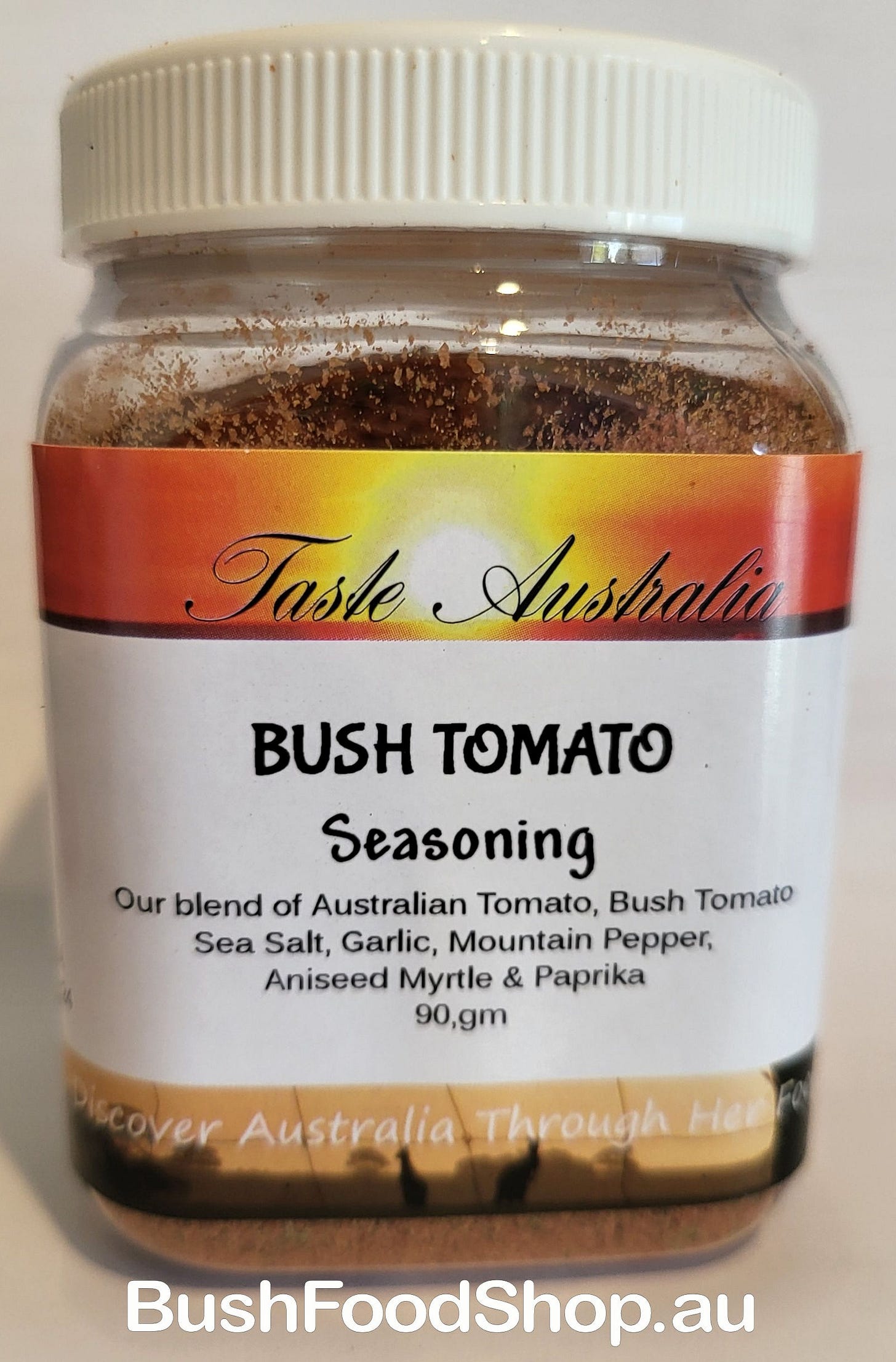You would think that tomatoes originated in Europe such is their inclusion in so many cuisines however it was the 16th Century Spanish explorers who came across them in Central America where they were cultivated by the indigenous peoples of the Andes.
Tomatoes seem to have an endless number of uses. They are the stars in sauces, salsas, soups, and salads and can also add some pizzazz to sandwiches, pasta recipes, pizza, and leafy green-based salads. They can even be stuffed, grilled, roasted, or baked, and they add both sweetness and acidity to dishes.
But the Australian Bush Tomato (Solanum centrale) doesn't look like the fruit you know and love plus it is not used in the same way either.
For a start it is small, smaller than a cherry tomato. It's dried like a sultana but is not sweet. In fact it is not harvested until it's dried. It prefers the desert extremes of Central Australia, dying down in winter and, weather permitting, regrowing in spring. It doesn't like frost, only wants a small drink and dislikes humidity. Temperamental little devil, aye? When conditions are perfect the bush grows to around 30cm high and as the fruit shrivels in the heat of an Outback summer, the fruit colour deepens to a rich ochre resembling a reddish, brown-coloured raisin with a concentration of fruit sugars and intense flavour.
In the wild, bush tomatoes can thrive however as with all plants you do need to identify them correctly before consumption as there are many lookalikes that are inedible and it should also be noted that the fruits are poisonous when green. Wild harvesters try their luck in June and December. I'm told that harvesting bush tomatoes is quite hard on the hands as well as the back. Small-scale commercial cultivation has been trialled in various locations around South Australia as well as central Australia with varying degrees of success.
Traditionally they would be gathered after they had dried and ground with a little water form a thick paste before being moulded into a large ball and left to dry in sun before being stored in tree forks.
The spicy, piquant and gutsy flavour can be used in marinades and sauces, savoury tarts and pies. It is best used as a seasoning but be careful when adding it as too much leaves a bitter taste.
Bush tomato is a great source of vitamin C, carbohydrates, dietary fibre and protein. Compared with regular tomato it is higher in the minerals potassium, calcium, iron, magnesium, sodium and zinc. Plus it contains the vitamins thiamine, niacin and niacin-related compounds.
I was fortunate to obtain a quantity of bush tomato in early 2024 to use in our Bush Tomato Seasoning. The ingredient had been scarce for some time and the outlook was grim so the seasoning was created so more people could experience the unique taste - it's the one you can't quite put your finger on but it is very moreish. It's ready to be used on pizzas and in any tomato based dish.
Our blend of Bush Tomato Seasoning is perfect for pizzas, pasta, salsa, sauces, seafood, vegetables and casseroles.
It can be used in many dishes where a dash of spicy tomato is required.
It has the right amount of bush tomato to balance the bitterness of bush tomato.







